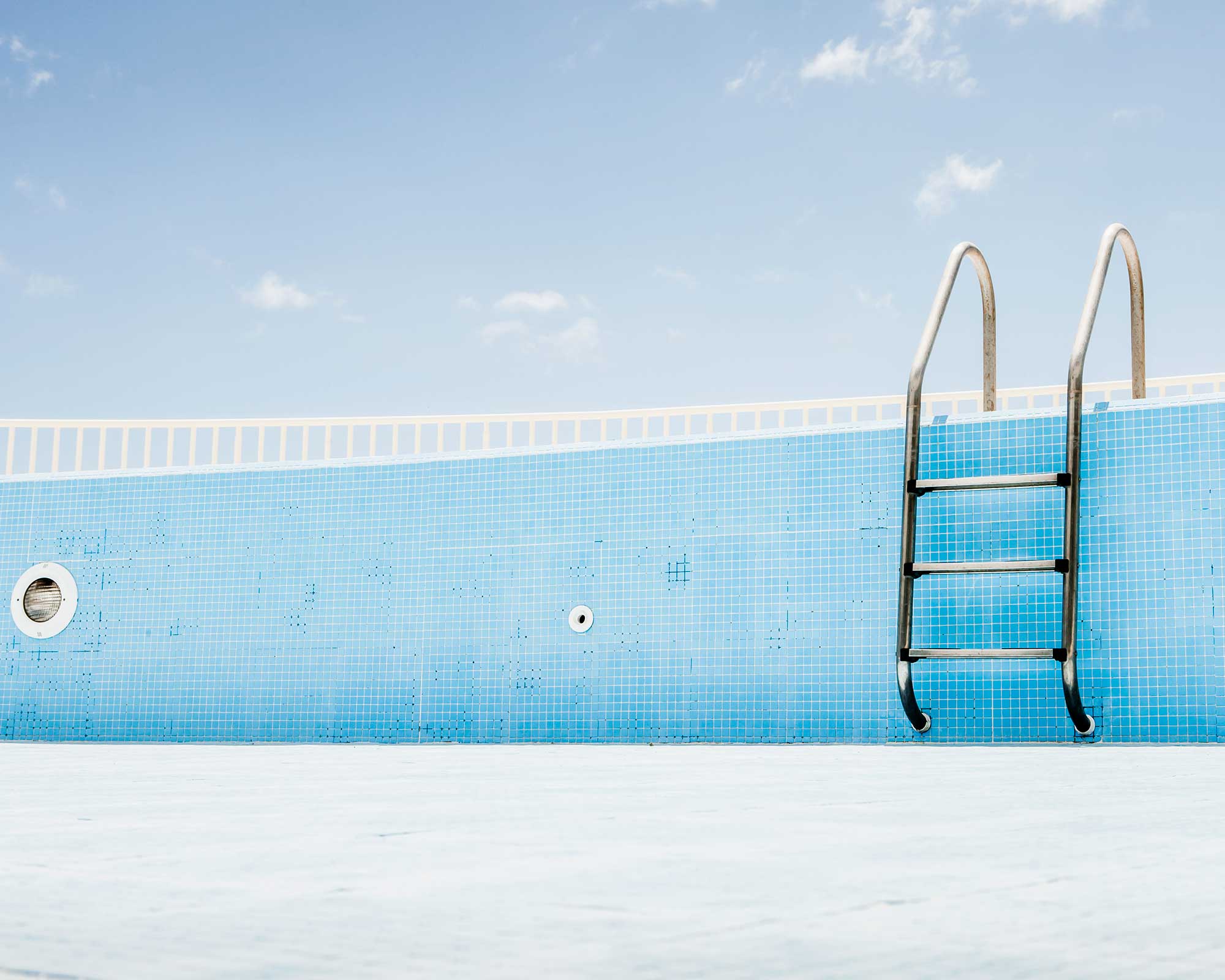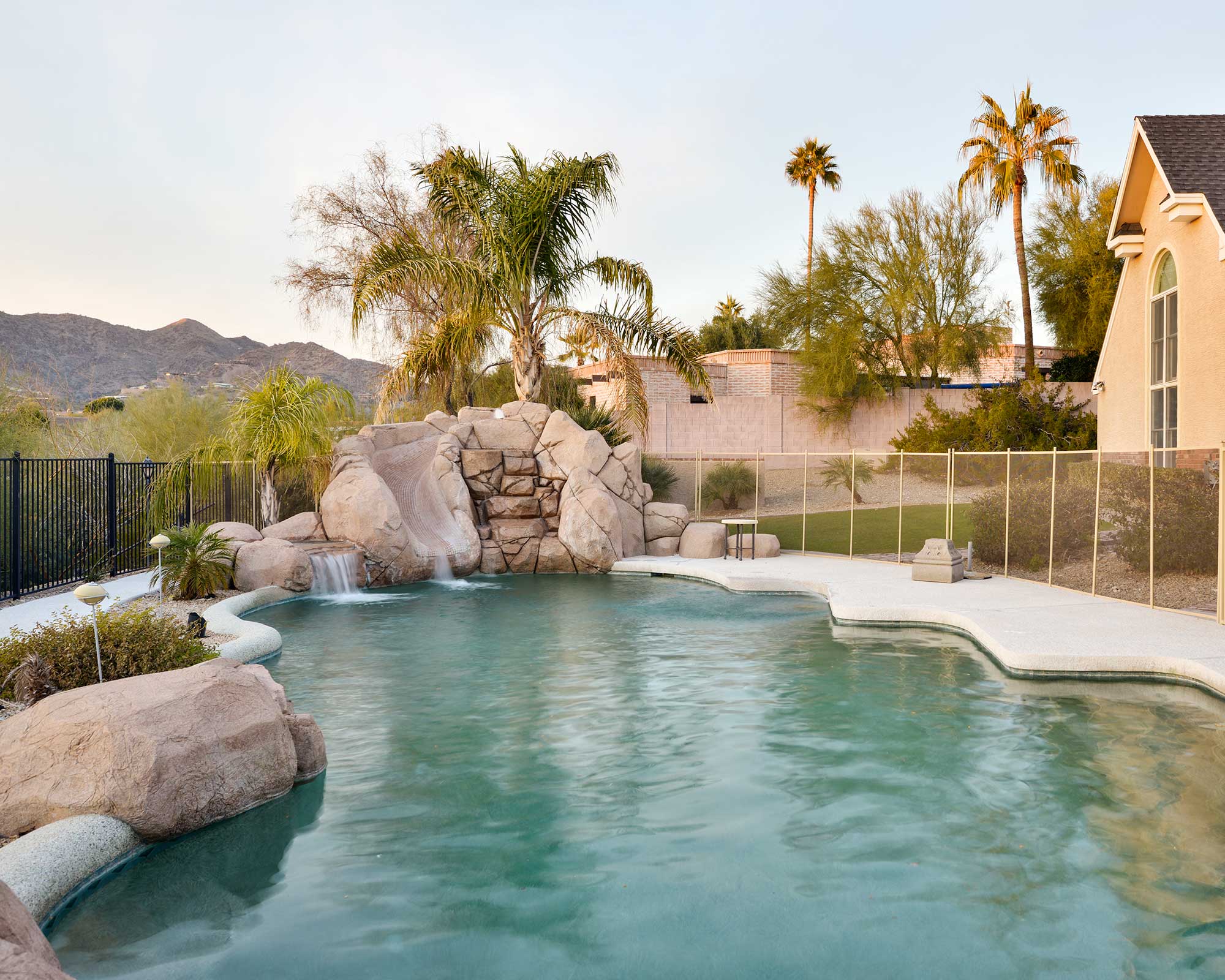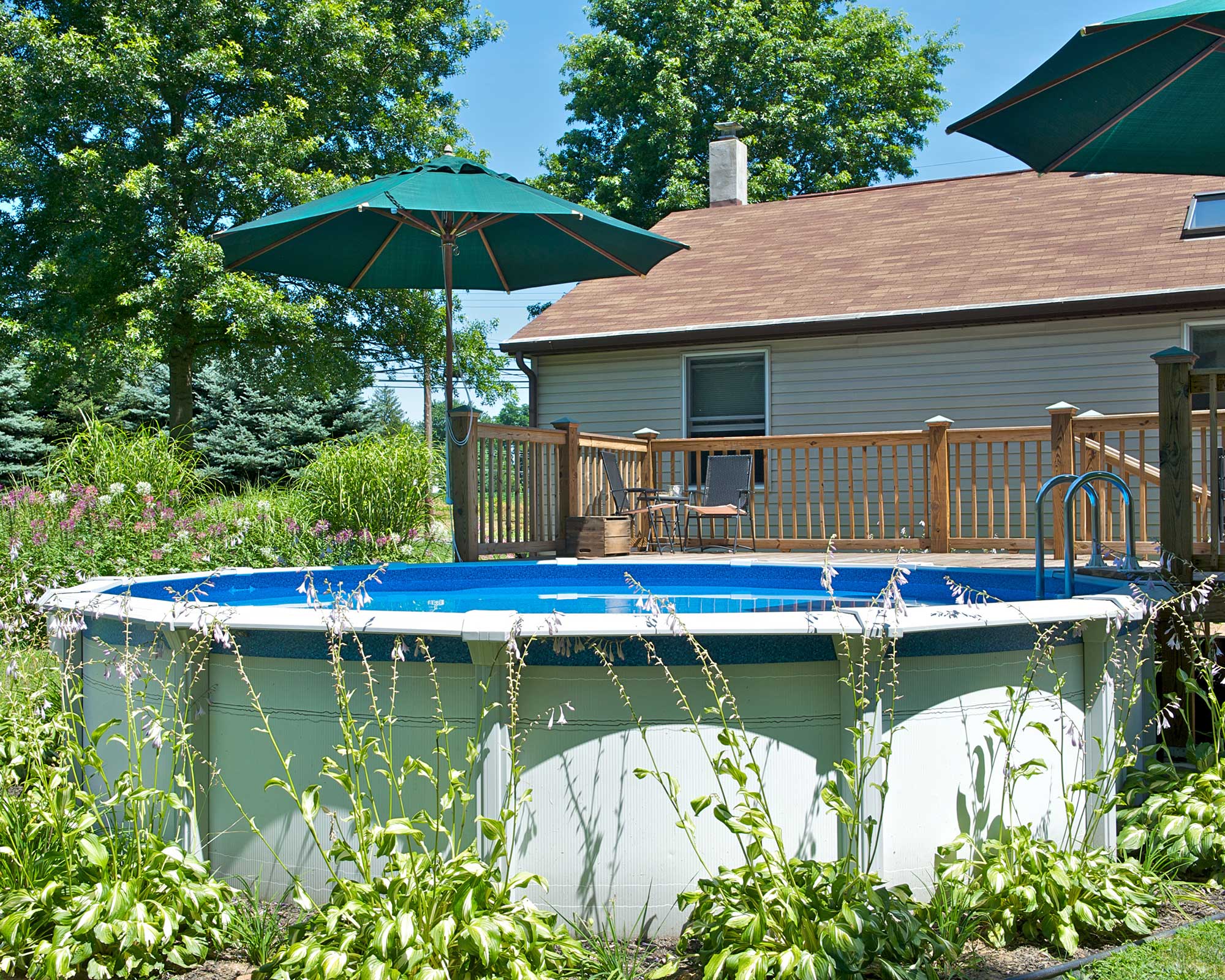How to drain a pool: expert advice on getting it right
Top tips on how to drain a pool safely – whether it's inground or above-ground


Wondering how to drain a pool? It may seem like a crucial part of owning one of these outdoor features – in fact, it's easy to assume it's an annual job. However, you may be surprised to know that draining away all the water completely is seldom necessary.
But, when the time comes, you'll need to know how it should be done properly, to avoid the risk of costly damage to your pool ideas. We've rounded up all the info you need to know – from why and when you'll need to do it to the steps you'll need to take. And by 'you', we really mean a professional; we'd advise playing it safe and avoiding DIY for this task.
The risks involved when learning how to drain a pool
Before we talk about the actual process behind how to drain a pool, it's important to understand that it should be treated as a last resort. 'Caution must always be taken when considering emptying a pool, due to the possibility of a structural failure,' says Verdun Bailey, Managing Director of 1st Direct Pools.
To put it simply, emptying an inground pool should only be considered in extreme cases when other options are not available, he says. But why? Well, if you take the water out of a pool, the pressure on the walls from the surrounding earth increases dramatically.
'If the pool is a liner pool and there is groundwater behind the liner, this may cause the liner to float or incur structural damage to the walls. If people have concrete or fiberglass pools, these could even pop out of the ground,' says Verdun. This risk is increased in high water table areas and pools close to water sources.
'The main advice would be to get a swimming pool expert to look at the pool construction and get their advice before emptying, to minimize any potential damage to the construction or the mechanical parts of the pool.'

Emptying a pool safely requires careful consideration
When do you need to drain a pool?
The good news is that it is rare that you will have to drain a pool. Usual pool maintenance for keeping the water sparkling clean relies on other methods such as vacuuming and chemicals.
And when it comes to winterizing a pool, you can drain away some of the water to lower the volume, but you definitely don't need to (and shouldn't) empty it entirely.
When, then, is draining a pool absolutely necessary? Generally, only when the pool structure itself needs repairs. This could be repairing a liner or fixing a crack in a concrete design. Another occasion where total drainage may be required is if you need to repaint your pool – a task that should only need doing every few years.
A final reason why you might decide to drain your pool is if the water hasn't been changed for many years. In this case, it's likely to have high levels of dissolved chemicals and/or calcium buildup, which makes rebalancing the water tricky. Draining the pool completely can allow for a deep clean and a total water refresh.

You may need to empty your pool to repair the liner
How to drain a pool safely
'The popular way to empty a pool is to use a submersible pump instead of the swimming pool circulation pump,' says Verdun. Using the circulation pump can damage it. You'll also need to switch off any pool lights which can overheat and break when not submerged.
When using this method, ensure that the water coming out of the pool is discharged safely away from the pool landscaping ideas. Verdun suggests a distance of around 66–98ft (20–30m) away so that the water does not build up pressure behind the pool wall.
'Water should also be discharged away from any water source to stop contamination,' he adds. Some people choose to dispose of the water via their sewer drainage system, whereas in some areas, you may be allowed to dispose of your pool water in the street. Check with your local authority for any restrictions and the best approach to use.
Also, before disposing of the water, check the chemical balance. Many local authorities require it to be as neutral as possible in both chlorine and pH. A chlorine neutralizer can help with this if you need the job done quickly.

Drain your pool water well away from the pool itself
Hydrostatic pressure relief valves – found at the bottom of pools – can be opened to reduce the risk of the pool from 'popping' out of the ground. These basically give any water in the ground beneath the pool a place to go, thus reducing pressure. Open one or two up when the pool is nearly fully drained. And, be prepared to replace them with new valve plugs once you're ready to fill the pool back up again, in case the original ones become damaged.
Once you've drained your pool, get to work quickly and fill it back up as soon as possible. Leaving a pool empty for long periods can increase the risk of damage. Also, be very wary of people, particularly children, falling in the pool while it's empty. A sturdy pool fence can help reduce this risk.

Switch off any pool lights before draining away the water
What is the best weather for draining a pool?
'It's important to consider that the pressure around the pool is always greater in the winter, after heavy rainfall,' Verdun says.
So, if you're draining your inground pool, pick a day that falls within a dry week, ideally not in the colder months.
Bear in mind that high temperatures can also damage your pool liner, however, if it's exposed for too long. Swim University recommends waiting until the outside temperature is 85°F (29°C) or lower.

Wait for a dry spell to drain your pool
How much does it cost to drain an inground pool?
According to HomeAdvisor, hiring a professional to drain an inground pool usually ranges from $800 to $1,550 (the equivalent of £583–£1,130).
Looking for more advice on landscaping costs? Our guide has plenty of useful info.
How do you drain an above-ground pool?
Draining an above-ground pool is a little less risky than draining an inground one, yet it still calls for a proper process. So, if in any doubt, call in a pro.
You may need to empty your above-ground model for cleaning, or perhaps for storing it away at the end of the season. Either way, the method of how to drain a pool of this type is more or less the same as with an inground one: by using a submersible pump.
Dispose of the water, taking the same considerations as those listed above. Any last remnants can be removed with a wet/dry shop vacuum. Then, either complete your repairs before filling it back up, or dry it down (a leaf blower can be used for this), fold the liner (if possible), and store it somewhere safe and dry – perhaps in a box in your garden shed (our best sheds buying guide is worth a look if you need an upgrade). The pool frame can be dismantled or covered until the next swimming season.

Draining an above-ground pool is less risky

The garden was always a big part of Holly's life growing up, as was the surrounding New Forest where she lived. Her appreciation for the great outdoors has only grown since then. She's been an allotment keeper, a professional gardener, and a botanical illustrator – plants are her passion.
